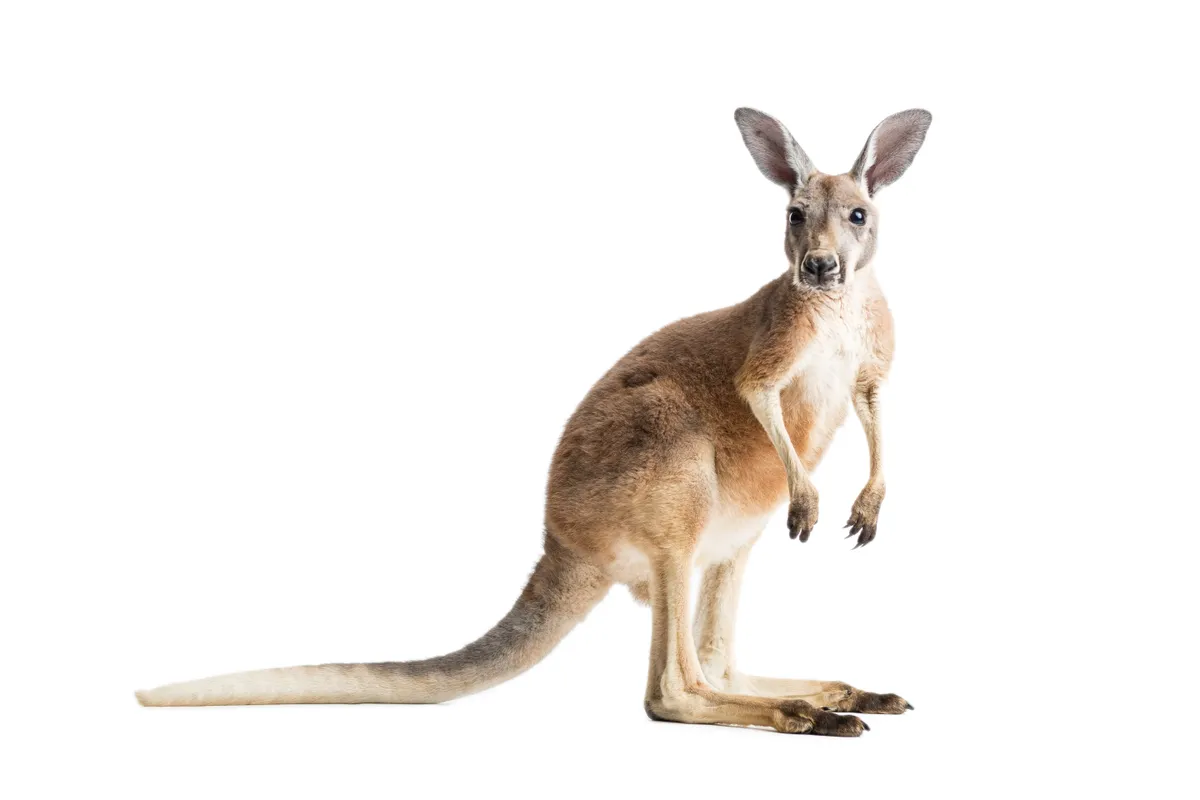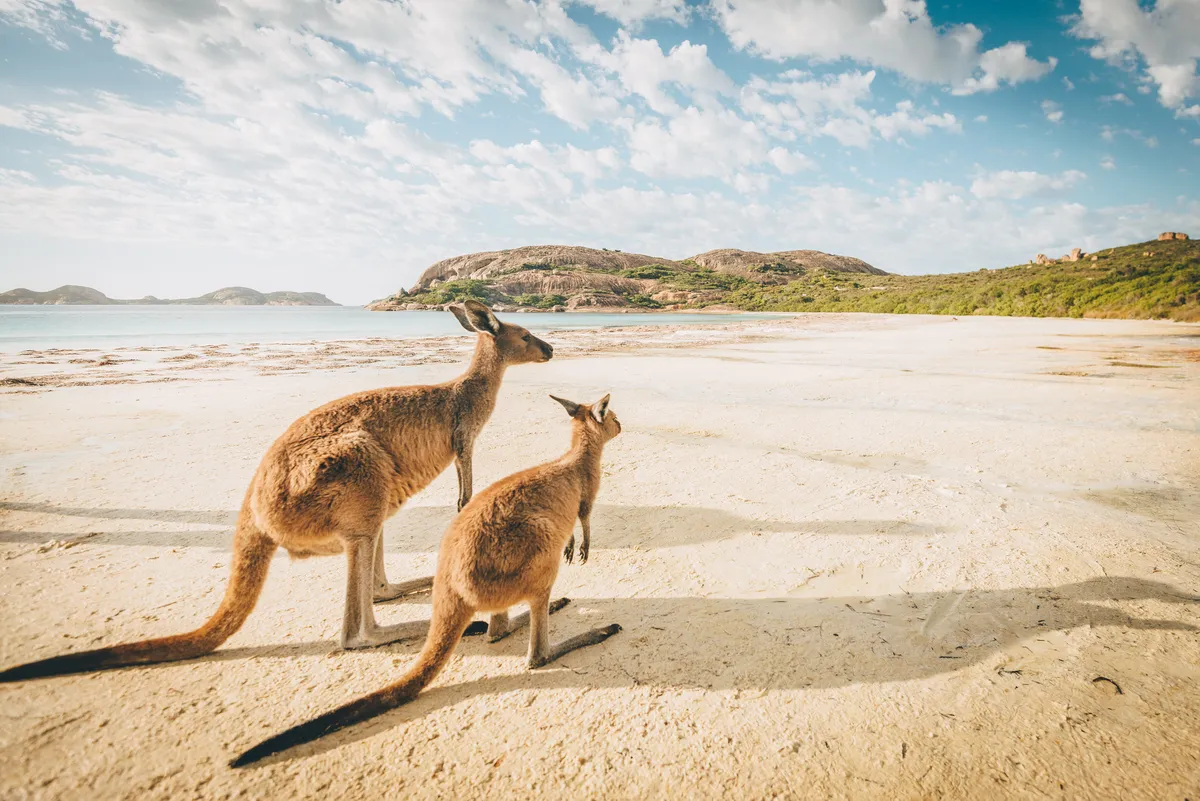Believe it or not, kangaroos have three legs! This discovery was made in 2014 by a team from Canada’s Simon Fraser University.
They corralled red kangaroos through a chamber that measured the downward forces they exerted as they walked.
- What are the most dangerous snakes in Australia? Discover the country's top venomous serpents
- What's the most dangerous animal in Australia? Does the country's wildlife deserve its deadly reputation?
When they aren’t hopping, kangaroos walk by putting their arms on the ground and moving their back legs in front of them. As they do this, they push down with their tail to propel themselves forward.

This tail exerts just as much force as any of the other limbs, making it effectively a third leg. Not only that, it’s the most important of the three limbs in terms of momentum – so kangaroos walk with their tails.
- How and why do kangaroos hop?
- How long does a joey spend in a kangaroo's pouch? Here's your ultimate baby kangaroo guide
The ancestors of today’s kangaroos were marsupials that lived in trees and used their tails for climbing and gripping.
But after 15 million years living on the ground as grass-grazing ruminants, the kangaroo’s tail has evolved into a specialised limb.
It contains almost as many vertebrae as the human spine, and is full of powerful muscles.

When boxing, kangaroos lean on their tails, and can use them as weapons – a single swipe could break someone’s leg.
Other animals with an odd number of legs
There are other candidates for species that naturally have an odd number of legs, but none are very convincing.
- Most starfish have five limbs, but these are arms, not legs, because they’re not used for locomotion.
- Snails and slugs are called gastropods (‘stomach feet’) because they only have one foot they crawl around on. But this is an integral part of their bodies rather than a limb, so they don’t count either.
- Finally, almost all of the Japanese spider crabs that are caught have nine limbs, but this is because they’ve lost one: they’re all born with 10.

Kangaroo feet
Kangaroo feet are well evolved for a life spent propelling their owner across the landscape in big bounds. In fact, kangaroos are classified as macropods, which means they're marsupials with big feet!
These huge feet make a great launch pad, as well as being pretty handy for fighting off rival males for breeding rights. Kangaroos also beat the ground with their feet to alert other nearby kangaroos when a predator is around.

Kangaroo hands
The paws on a kangaroo's front legs are very different to those on the back. Kangaroo forepaws are much smaller than their hindpaws, have five fingers and aren't too dissimilar from human hands, although they don't have a thumb. They're also curved and clawed, and are used for more delicate tasks like grooming or feeding.
Interestingly, kangaroos can also keep cool by licking their hands and rubbing the saliva over their bodies, which works ina similar way to sweat.





